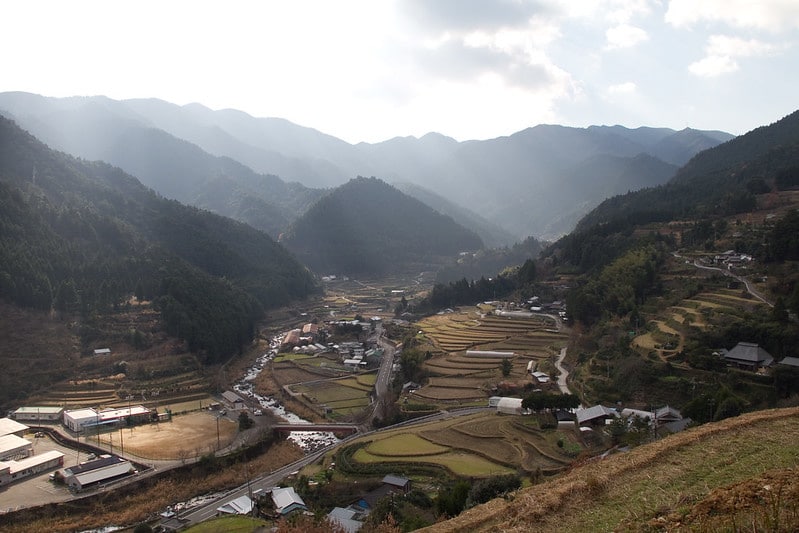

Danny Choo / CC BY-SA 2.0
By Olivia Sullivan
One of the many unfortunate outcomes of the coronavirus pandemic has been the quick and obvious increase in single-use plastic products. After COVID-19 arrived in the United States, many grocery stores prohibited customers from using reusable bags, coffee shops banned reusable mugs, and takeout food with plastic forks and knives became the new normal.
Despite recent scientific evidence that reusables don’t transmit the virus, the plastic industry has lobbied hard for a return to all things disposable plastic. Inevitably, a lot of that plastic will continue to flow into our environment.
While COVID-19 has certainly thrown a wrench into the hard-earned progress we’d been making in reducing waste, eliminating plastic pollution entirely was always going to be challenging — with or without a pandemic. The jarring rise of single-use plastics is an expedited version of a familiar trend. Plastic production has been steadily increasing for quite some time.
As a zero-waste advocate, I’ve seen how the tsunami of plastic continuously being produced and flooding our planet has made achieving zero-waste goals incredibly difficult. The sheer amount makes it hard to safely and efficiently dispose of plastic, no matter how hard we try.
But as I examine the problem, and search for solutions, I keep coming back to one noteworthy example.
In 2003 the small Japanese town of Kamikatsu set an ambitious zero-waste declaration, aiming to be 100% waste-free by 2020. The goal was to produce no trash, meaning everything from food packaging to unwanted clothing to yesterday’s newspaper should be reused, repurposed into new goods, or recycled.
#DYK decorative leaves adorning Japanese dishes create jobs? Seniors in #Kamikatsu, Tokushima, grow & collect them, helping to revive the community: https://t.co/RsDt6GmhcG #agingsociety #RegionalRevitalization #GlobalGoals pic.twitter.com/NBxxAcUDIB
— The Gov't of Japan (@JapanGov) October 7, 2019
Now that 2020 has arrived, we can see the result: In the 17 years since establishing its goal, Kamikatsu transitioned from openly incinerating all its trash to reusing and recycling 80% of its waste.
While the town made incredible progress, it ultimately fell short of its 100% goal. Its main issue? Unrecyclable plastic packaging and mixed materials still end up in the trash.
As one resident explained to the AFP news agency last year, “Our lifestyle depends mainly on plastic. Consumers can reduce plastic waste to a certain extent, but we’ll still have waste if producers keep making plastic products.”

Kamikatsu, Japan. Yuki Shimazu / CC BY-SA 2.0
This reveals a worldwide truth: Even products made mostly from easily recyclable materials like paper, aluminum or cardboard can’t be sorted and recycled if they contain plastic components that can’t be separated.
The truth is, some materials simply aren’t recyclable, and only 9% of all the plastic ever created has been recycled. As Kamikatsu’s residents have painstakingly proven, no matter how many categories consumers sort their waste into or how diligently they scrub down their plastic food containers, most plastics cannot be recycled.
Meanwhile we keep hearing the industry-driven narrative that recycling can stop plastic from choking our marine life or littering our natural places. That’s intentionally misleading.
Around the world, as in Kamikatsu, plastic is everywhere. With excessive amounts of plastic products and packaging stocked on store shelves, it’s clear that zero-waste goals cannot be achieved by consumers alone. Plastic is not a “zero waste” material, so in order to achieve zero waste, companies must stop making so much plastic.

Marine debris collected at Papahānaumokuākea Marine National Monument. NOAA
We can achieve that. The first steps include banning some of the worst and most polluting single-use plastics, placing a pause on the development of new plastics facilities, and protecting state and local governments’ ability to enact more stringent regulations.
We must also shift the paradigm by holding producers responsible for the waste they create. By requiring new plastic products to contain recycled plastic and making producers fund the collection and recycling of plastic products, producers would be incentivized to design longer lasting products that can actually be reused and recycled.
These goals — outlined in numerous scientific studies and advocacy reports — have some forward motion. In the United States, a federal bill was recently introduced in both the House and the Senate, the Break Free From Plastic Pollution Act. If passed this bill — or others like it on the local, state or national levels — could help move the world beyond single-use plastics and make that needed systemic change a reality.
The bill hasn’t moved forward since it was introduced this past February, but the world is still on a deadline. A recent study published in the journal Science looked at rising levels of plastic production and said “coordinated global action is urgently needed to reduce plastic consumption, increase rates of reuse, waste collection and recycling, expand safe disposal systems and accelerate innovation in the plastic value chain.”
Requiring producers to stop making nonrecyclable products designed to be thrown out is the first step toward achieving that goal. Only then will Kamikatsu and other towns, cities and countries around the world finally be able to eliminate plastic pollution and reach 100% zero waste.
The opinions expressed above are those of the authors and do not necessarily reflect those of The Revelator, the Center for Biological Diversity or their employees.
Olivia Sullivan is a zero waste associate with the U.S. Public Interest Research Group (U.S. PIRG) working on a campaign to move the United States beyond plastic.
Reposted with permission from The Revelator.

 233k
233k  41k
41k  Subscribe
Subscribe 